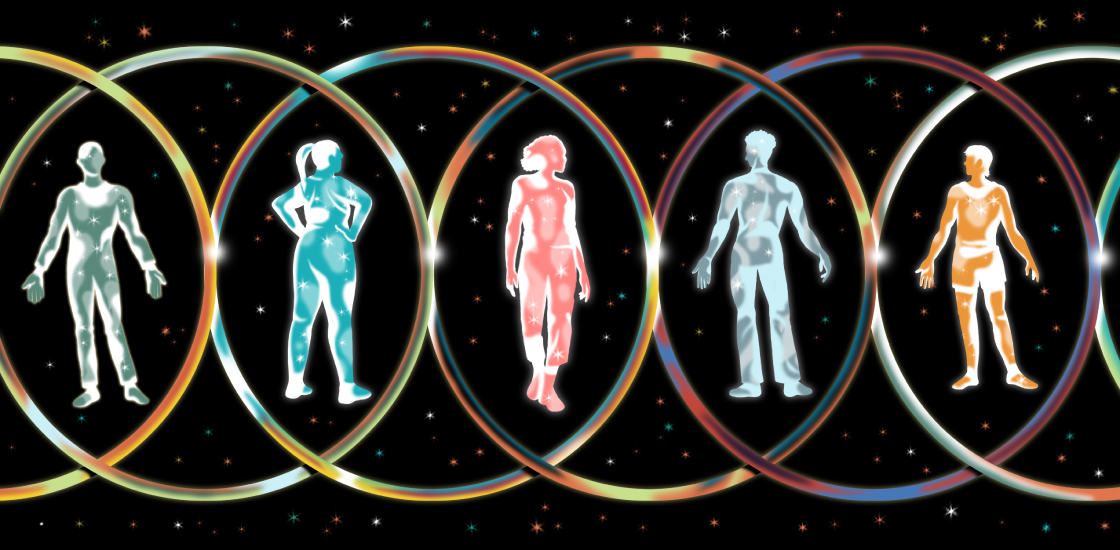A new questionnaire — created after 12 years of collaboration with autistic and trans people — aims to capture someone’s internal experiences of gender and gender diversity more fully than may be possible with existing measures.
Rather than relying on labels, which differ among communities, the Gender Self-Report (GSR) probes how respondents “think of themselves, want to be seen, want to be addressed, and want to be, physically,” the researchers who developed the tool wrote.
“This scale has my full endorsement,” says Meng-Chuan Lai, associate professor of psychiatry at the University of Toronto in Canada, who was not involved in the study. He praised the work’s “extensive co-production and robust psychometric evaluation.”
Autistic people are more likely to be trans than non-autistic people are, research shows. And although estimates vary, gender-diverse people are three to six times more likely to be autistic than those who are cisgender, according to a large 2020 study.
“The intersection of gender diversity and neurodivergence is part of the natural contour of human diversity,” says John Strang, director of the gender and autism program at Children’s National Hospital in Washington, D.C., who led the creation of the GSR.
But much of autism research, including research exploring sex and gender differences, fails to track gender diversity among study participants, Spectrum has reported. “If you’re lucky,” researchers distinguish between sex and gender, says GSR study investigator Jacob Michaelson, associate professor of psychiatry at the University of Iowa in Iowa City. But studies may offer participants only a few gender categories, which “doesn’t really capture all of the meaningful variation that exists,” he says. And increasing the number of categories can create its own problems, leaving fewer people in each group and complicating the statistical analysis, Strang adds.
The GSR instead describes people’s gender using continuous values along several different dimensions, Michaelson says. “Wherever they exist in that space kind of has a slightly different meaning about their gender identity.”
T
he survey consists of 30 questions that Strang and his team validated with 1,654 cisgender, transgender and otherwise gender-diverse people aged 10 to 77 years, more than a third of whom are autistic. It gauges where people fall on three spectra: “Binary Gender Diversity” (BGD), “Nonbinary Gender Diversity” (NGD) and the “Female-Male Continuum” (FMC).BGD measures the contrast between someone’s assigned sex at birth and where they identify on a continuum of femaleness and maleness. NGD tracks someone’s level of “nonbinary” gender experiences (for example, high levels of agreement with statements such as “I think of myself as neither male nor female”). And the FMC offers researchers the option to represent a respondent’s attachment to femaleness or maleness without relying on sex assigned at birth, a classification that is complex for intersex people. The team described the GSR in January in American Psychologist.
Researchers should still ask study participants how they identify, Strang says. But the GSR can help reveal gender diversity even among people who may not have access to the range of “beautiful and rich descriptive terms for gender,” he says.
The measure uses simple language and, unlike many established measures, asks the same questions regardless of assigned sex at birth. The BGD and NGD dimensions function independently in order to include people who are, for example, both transmasculine and nonbinary. And it phrases questions “in a neutral or in a positive way,” Strang says, rather than focusing on gender dysphoria, which not all trans and nonbinary people experience.
Autistic trans people often face heightened skepticism from those who doubt their ability to know their own gender, says Wenn Lawson, a trans and autistic adjunct associate professor at Curtin University in Perth, Australia, who has no connection to the research. The GSR, he says, “has no judgment. It’s a tool that just says ‘explore and see where this takes you.’”
P
eople across the gender and autism spectra were “part of the scientific team developing the tool,” says study investigator Kevin Pelphrey, professor of neurology at the University of Virginia in Charlottesville. That “led to a much better end result,” he says.Pelphrey, who uses brain imaging to study sex differences among autistic people, says the GSR enables him to move beyond tropes about male and female brains. “Now I can look at a much more nuanced, multidimensional characterization of gender,” he says, including how it can change over time.
The GSR’s applications are not limited to research, Strang says, but he cautions that the measure is not intended to determine access to gender-affirming care. It’s a “self-advocacy tool,” he says.
Collecting more responses to the GSR will help researchers identify if there are more potential domains within the data, says Jenny Mai Phan, an autistic postdoctoral research fellow at Children’s National and one of Strang’s trainees. Phan is using the tool in a pilot study about pubertal development and sex education for autistic adolescents.
Strang next plans to investigate whether the GSR could include a potential dimension of “bothness” — the experience of simultaneous maleness and femaleness — as well as how it could better capture gender fluidity. And the measure still needs to be tested for measurement bias across more people of different races and ethnicities.
Given how new the survey is, it may change as more researchers use and adapt it, Lawson says. “Validity and reliability,” he notes, “are tests of time.”






